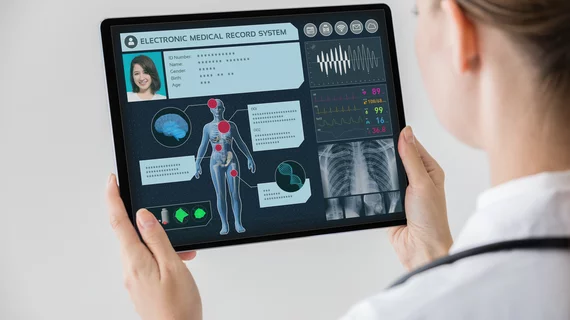Machine learning prediction model helps prevent spread of HIV
Researchers from Kaiser Permanente have developed a machine learning algorithm that could help prevent the spread of the HIV virus by finding at-risk patients and getting them on prevention medications. The researchers published the findings of their prediction model in The Lancet HIV.
Since the introduction of pre-exposure prophylaxis (PrEP), a pill that can reduce the HIV virus from establishing a permanent infection, prevention of HIV has improved, but limitations of current HIV risk prevention tools are a barrier to its effectiveness. The pill is 99% effective at preventing HIV.
Researchers developed a prediction machine learning model to find PrEP candidates in the Kaiser Permanente Northern California health system.
They looked at HIV uninfected adult members of the health systems who were not using PrEP. The model used 81 electronic health record variables to predict incident HIV diagnosis within three years, 44 of which were most relevant for predicting HIV risk.
“It is critical that we identify our patients at risk of HIV acquisition,” senior author Jonathan Volk, MD, MPH, an infectious disease physician who treats patients with HIV at Kaiser Permanente San Francisco Medical Center, said in a statement. “We used our electronic medical record to develop a tool that could be implemented in a busy clinical practice to help providers identify patients who may benefit most from PrEP.”
Of the cohort in the study, which included more than 3.7 million patients, there were 784 HIV incident cases. Overall, the machine learning model predicted 2.2% of the population cohort were at high risk or very high risk of contracting HIV. Of that group, about half later became infected.
The prediction model could help improve the use of PrEP in the future. Only about 7% of those who could benefit from the prevention medication use it, according to the CDC. Other prediction techniques ignore several factors that play into risk, including race, according to the researchers. Researchers found their tool identified more patients at risk compared to other models.
“Our predictive model directly addresses this gap and may be substantially more effective than current efforts to identify those who may be good PrEP candidates,” Volk said.
However, development of the tool was aided by the comprehensive medical records of Kaiser Permanente, with high-quality individual-level data. The tool could be used in EHR systems of primary care doctors, who can then speak with patients about the possible benefits of taking PrEP.
“Embedding our algorithm in the electronic health record could support providers in discussing sexual health and HIV risk with their patients, ultimately increasing the uptake of PrEP and preventing new HIV infections,” lead author Julia L. Marcus, PhD, MPH, now at Harvard Medical School and Harvard Pilgrim Health Care Institute but formerly of the Kaiser Permanente Division of Research, said in a statement.

